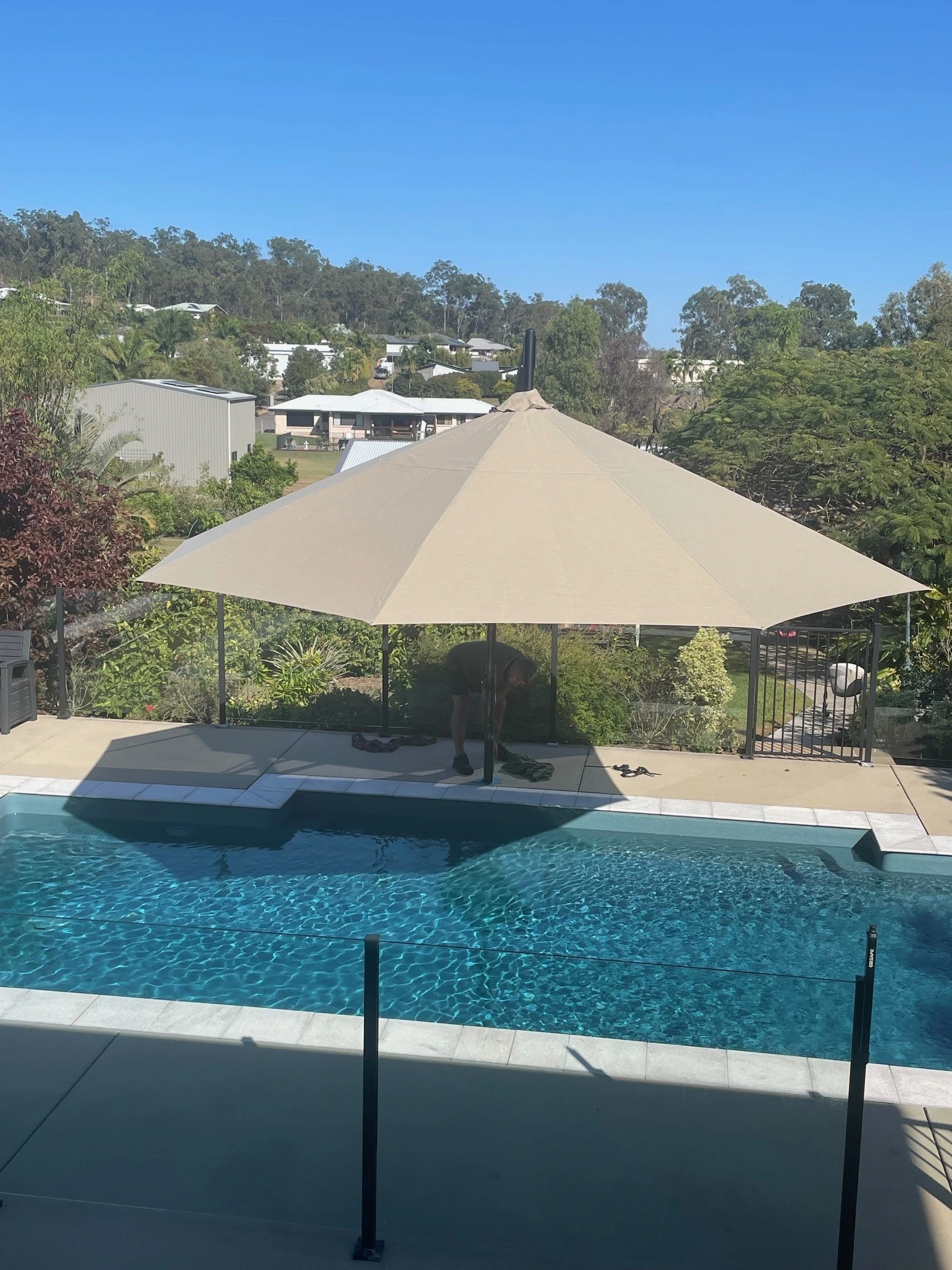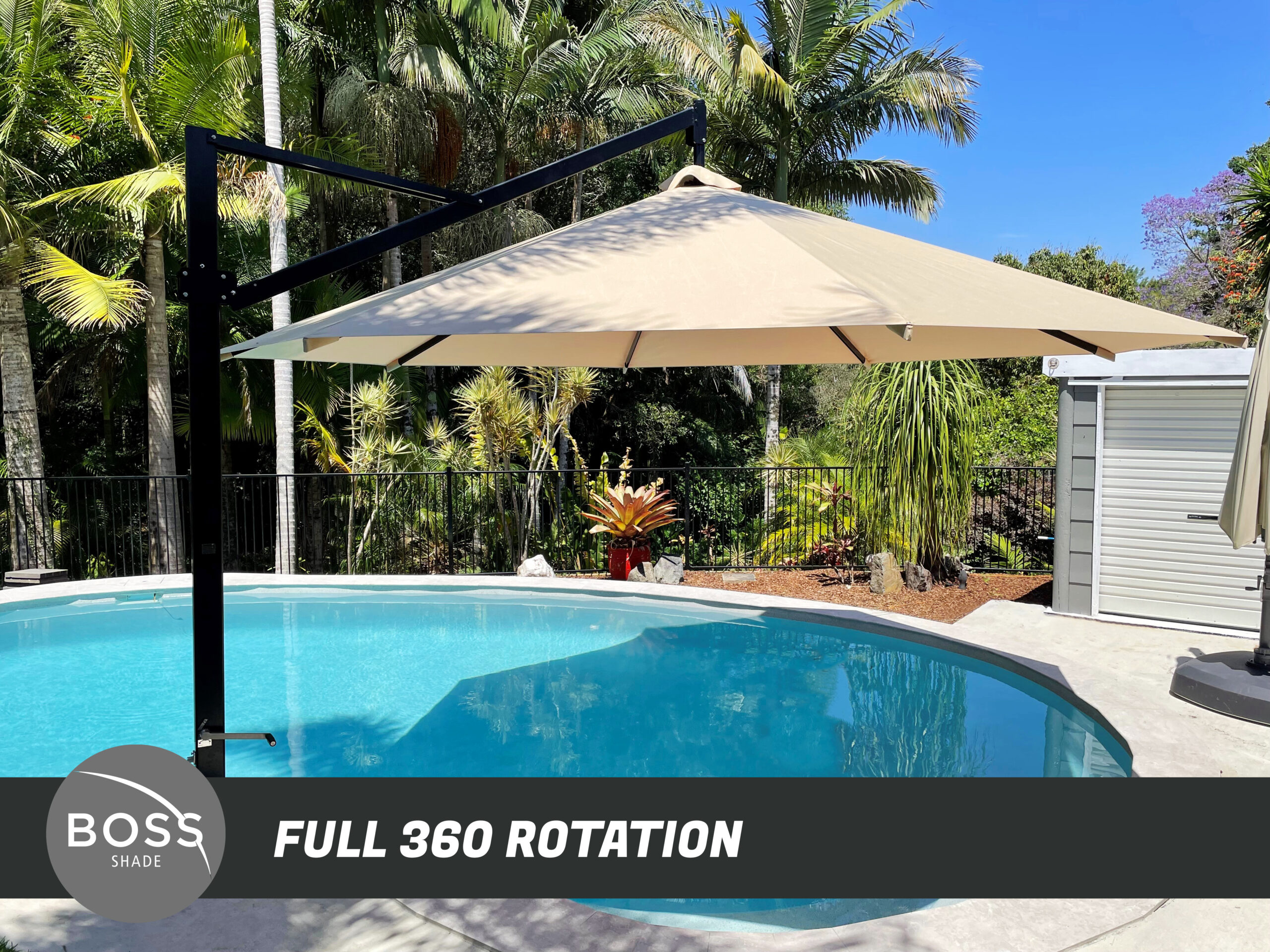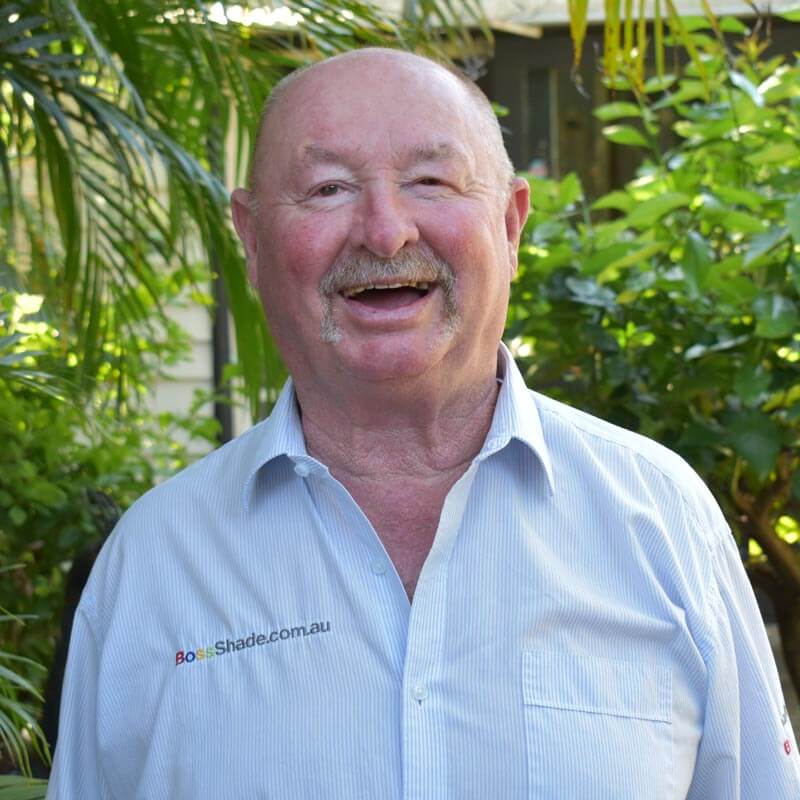When it comes to outdoor comfort and style, a big outdoor umbrella is not just a luxury—it’s a smart investment. Whether you’re shading a backyard, a commercial patio, or a poolside lounge, the right umbrella can completely transform your space. But with so many materials available, how do you know which one suits your needs best?
In this guide, we’ll walk you through the most common materials used in large outdoor umbrellas and help you choose the one that ticks all the boxes for durability, aesthetics, and performance.

1. Fabric Canopy Materials
The canopy—the part of the umbrella that shields you from the sun—is arguably the most important component. It’s not only responsible for providing shade but also has a significant impact on the overall look and longevity of your umbrella. Here are the main types of canopy materials used in large outdoor umbrellas:
a. Polyester
Polyester is one of the most widely used materials in outdoor umbrellas due to its affordability and versatility. It’s lightweight, easy to clean, and available in a variety of colors and patterns.
Pros:
- Cost-effective
- Quick-drying
- Good color retention with UV treatment
Cons:
- May fade or wear over time without UV protection
- Not as durable as higher-end fabrics
b. Acrylic (e.g., Sunbrella)
Acrylic fabrics like Sunbrella are considered top-tier when it comes to outdoor use. These materials are engineered to withstand years of sun exposure, wind, and rain while maintaining their vibrant colors.
Pros:
- Exceptional fade resistance
- Mildew and water-resistant
- Excellent breathability
Cons:
- Higher upfront cost
- Heavier than polyester
c. Olefin
Olefin is another strong contender for outdoor settings. It’s known for its strength, comfort, and resistance to stains, mildew, and abrasion.
Pros:
- Strong and durable
- Affordable alternative to acrylic
- Great for humid environments
Cons:
- Less soft compared to acrylic
- May offer fewer design choices
2. Frame and Pole Materials
The strength and stability of your umbrella depend largely on the materials used in the pole and frame. Here are the main materials you’ll come across:
a. Wood
Wooden frames exude natural charm and are perfect for rustic or classic outdoor setups. Common choices include teak, eucalyptus, and hardwoods.
Pros:
- Visually appealing and warm aesthetic
- Sustainable options available
- Heavy and sturdy
Cons:
- Requires regular maintenance
- Prone to cracking or warping if not treated properly
b. Aluminum
Aluminum is one of the most popular materials for umbrella frames because it is lightweight, rust-resistant, and easy to maneuver.
Pros:
- Lightweight yet strong
- Rust-resistant
- Available in various finishes
Cons:
- Can bend under strong winds if not reinforced
- Less classic in appearance than wood
To elevate durability even further, many umbrellas feature an anodised aluminium frame, which provides enhanced corrosion resistance and a sleek, modern finish. This makes it ideal for coastal areas or poolside installations.
c. Steel
Steel is incredibly strong and often used in umbrella bases or structural supports. Powder-coated steel offers added resistance to corrosion.
Pros:
- Extremely durable
- Offers high wind resistance
- Cost-effective
Cons:
- Heavier than aluminum
- Requires rust-prevention coatings
If you’re planning on using your umbrella in a high-wind area or prefer a freestanding option, consider pairing it with a steel base for additional stability and safety.
3. Size and Shape Considerations
The material is important, but so is the size and shape of your umbrella. Bigger umbrellas provide more shade, but they also require stronger frames and bases to ensure they don’t tip over in the wind.
Common shapes include:
- Round: Classic and effective for general use
- Rectangular: Ideal for long tables or rectangular seating areas
- Square: Perfect for modern settings or small patios
When choosing a larger umbrella, opt for premium materials to avoid sagging or wear over time. Canopy tension and frame integrity are critical for long-term satisfaction.

4. Specialty Umbrella Types
Material choices can vary depending on the type of umbrella you choose. Here are some specialty designs to consider:
a. Market Umbrellas
Market umbrellas are traditional in design and often used with dining tables. They typically feature a central pole and are made with wood or aluminum.
b. Cantilever Umbrella
A Cantilever Umbrella is designed to maximize shade without the obstruction of a center pole. These umbrellas often use high-quality aluminum or steel in their construction to support the offset arm. They’re perfect for lounge areas, pools, or commercial patios where flexibility is key.
c. Poolside Umbrellas
Poolside umbrellas are specifically designed to withstand wet environments and prolonged UV exposure. Materials like acrylic fabric and anodised aluminum frames make them highly resistant to saltwater, chlorine, and sun damage.
5. Climate and Location
Where you live plays a huge role in determining the best umbrella materials. For instance:
- Coastal Areas: High salt content in the air can corrode metal. Choose anodised aluminum or marine-grade stainless steel.
- Tropical Locations: High humidity and rain demand mildew-resistant and quick-drying fabrics like olefin or acrylic.
Dry, Sunny Regions: UV exposure can fade and weaken fabrics, so opt for UV-stabilized or solution-dyed acrylics.

6. Maintenance and Longevity
Materials that are low-maintenance save time and money in the long run. Here’s how some of the popular choices hold up over time:
- Aluminum frames: Just need a wipe-down and occasional inspection.
- Wood frames: Require seasonal sealing or oiling.
- Acrylic fabric: Maintains color and shape for 5–10 years.
- Polyester fabric: May need replacement every 2–3 years depending on exposure.
Investing in quality materials from the start will help you avoid frequent repairs or replacements. It’s worth paying a little more upfront for something that will stand the test of time.
7. Sustainability Factor
If you’re eco-conscious, look for responsibly sourced woods like FSC-certified teak or eucalyptus. Recycled materials and sustainable manufacturing processes are also becoming more common in premium umbrella brands. Many high-end acrylic fabrics are recyclable and made with less water and energy than traditional textiles.
8. The Best Choice for You
To sum it up:
- For affordability: Polyester and steel frames are solid budget options.
- For luxury and longevity: Acrylic fabrics and anodised aluminum frames offer premium performance.
- For eco-conscious buyers: Choose FSC-certified woods and recyclable fabrics.
- For commercial or poolside use: Invest in durable, mildew-resistant materials like acrylic and olefin with a robust steel or aluminum frame.
Choosing the right umbrella materials depends on your priorities—whether it’s design, durability, ease of maintenance, or budget. And no matter which way you lean, make sure to consider how all the components work together to deliver maximum shade and comfort.
Why Choose Us?
At Boss Shade, we specialise in high-quality outdoor shade solutions built to endure the harshest Australian conditions. From stylish cantilever umbrella designs to sturdy steel base options and elegant poolside umbrellas, our products combine the best materials and engineering for long-lasting performance. Whether you’re after an anodised aluminium frame or premium fade-resistant canopy, we’ve got you covered—literally.
Explore our full range at bossshade.com.au and find the perfect shade solution for your home or business.
Bringing It All Together
Don’t underestimate the power of good materials when it comes to choosing your next big outdoor umbrella. Whether you’re relaxing by the pool, entertaining guests, or outfitting a commercial venue, the right combination of frame and canopy will make all the difference.
Take your time, consider your climate, and most importantly—choose quality. It’ll pay off every time you sit down in the shade.

Call Bob

